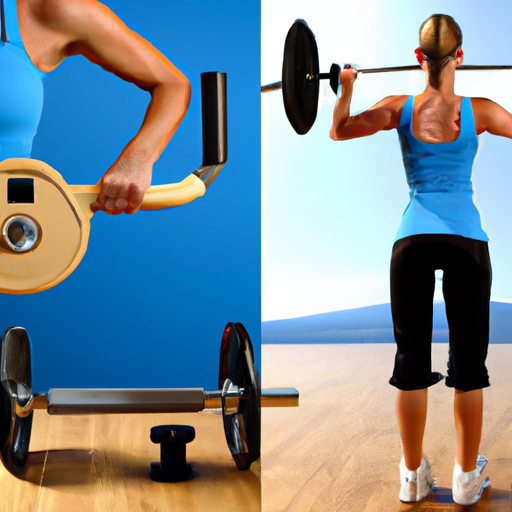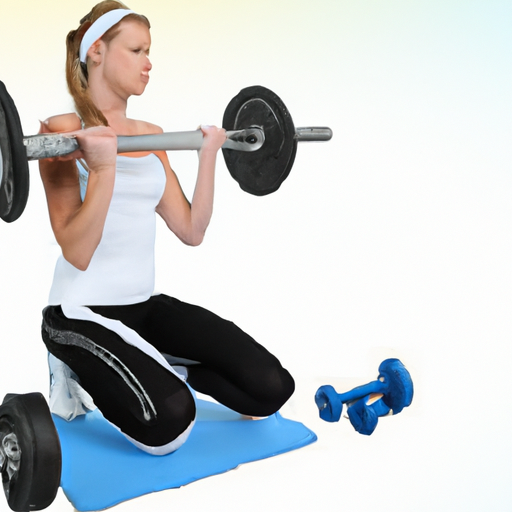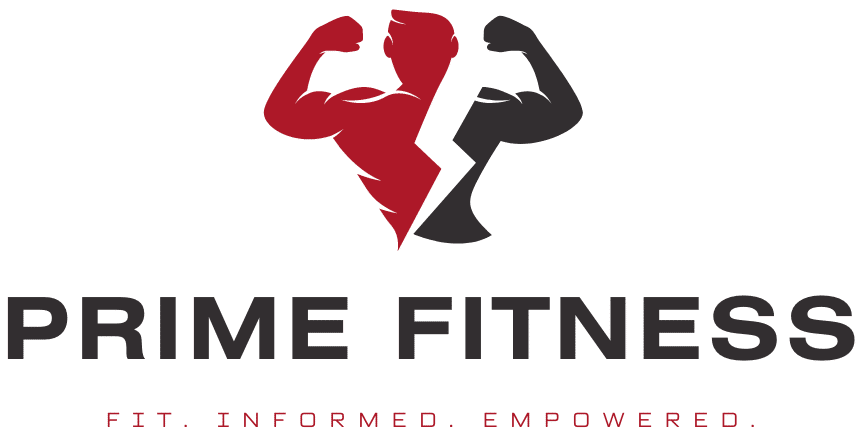In this article, you will discover a complete upper body workout routine that is perfect for all fitness levels. Whether you are a beginner or have been working out for years, this routine can be tailored to suit your individual needs and goals. We will take you through a series of exercises that target your chest, back, shoulders, arms, and core, providing a well-rounded workout. By the end, you will have a better understanding of how to efficiently train your upper body and achieve your fitness goals. Are you looking to improve your upper body strength and overall fitness? A complete upper body workout routine can help you achieve your goals while providing numerous health benefits. Whether you’re a beginner or an advanced fitness enthusiast, incorporating specific exercises and following a structured routine can help you achieve remarkable results. In this article, we will discuss the benefits of an upper body workout routine, choosing the right exercises, warm-up and stretching techniques, beginner and advanced workout routines, modifications for different fitness levels, setting realistic goals, nutrition and hydration, the importance of rest and recovery, and conclude with some key takeaways.

Benefits of an Upper Body Workout Routine
An upper body workout routine provides a plethora of benefits that can enhance your overall well-being. Let’s take a closer look at some of these benefits:
Improved Muscle Strength
Engaging in regular upper body exercises can significantly increase your muscle strength. By focusing on exercises that target various muscle groups such as the chest, shoulders, back, and arms, you can effectively develop and strengthen your upper body muscles. Improved muscle strength not only enhances your physical capabilities but also improves your posture and overall body mechanics.
Increased Muscle Definition
If you’re aiming to achieve a sculpted and defined upper body, an upper body workout routine is essential. By incorporating exercises that involve resistance training, such as dumbbell curls or push-ups, you can promote muscle growth and achieve a more toned and defined appearance.
Enhanced Posture and Stability
A strong upper body is crucial for maintaining good posture and stability. Regular upper body exercises can improve the strength and endurance of the muscles supporting your spine and help you maintain proper alignment. This can prevent common posture-related issues such as rounding of the shoulders and back, leading to improved overall posture and stability.
Boosted Metabolism
Engaging in upper body exercises can also contribute to an increased metabolism. Resistance training, in particular, stimulates muscle growth and can lead to an increase in basal metabolic rate. This means that even at rest, your body will burn more calories, aiding in weight management and overall fat loss.
Improved Overall Upper Body Strength
Finally, an upper body workout routine can greatly enhance your overall upper body strength. Strengthening the muscles in your chest, shoulders, back, and arms can have a positive impact on your performance in daily activities, as well as in sports or other physical pursuits.
Choosing the Right Exercises
When designing your upper body workout routine, it’s important to consider your fitness goals, current fitness level, and the specific muscle groups you want to target. Here are some key factors to keep in mind when choosing the right exercises for your routine:
Identify your Fitness Goals
Do you want to build muscle mass, increase strength, improve endurance, or enhance overall fitness? Identifying your fitness goals will help you select exercises that align with your objectives. For example, if you aim to build muscle mass, incorporating exercises that involve higher weights and lower repetitions would be beneficial.
Consider your Fitness Level
If you’re a beginner, it’s essential to start with exercises that suit your current fitness level. Gradually increasing the intensity and difficulty of your workouts will help you progress safely and avoid injury. For advanced individuals, incorporating more challenging exercises can provide the stimulus needed to continue making progress.
Select Exercises Targeting Different Muscle Groups
To achieve a well-rounded upper body workout, it’s important to select exercises that target different muscle groups. This includes exercises for the chest, shoulders, back, and arms. Including both compound exercises (which engage multiple muscle groups) and isolation exercises (which target specific muscles) can lead to better overall muscle development.
Incorporate a Balance of Strength and Resistance Training
A balanced upper body workout routine should include a combination of strength and resistance training exercises. Strength training involves using heavier weights with lower repetitions to build muscle strength, while resistance training involves using lighter weights with higher repetitions to develop endurance and tone the muscles. Incorporating both types of training can provide optimal results.
Choose Exercises that You Enjoy
Enjoyment is a crucial factor in maintaining consistency in your workout routine. When selecting exercises, choose ones that you enjoy and are more likely to stick with. This can increase your motivation and make your workouts more enjoyable.
Warm-up and Stretching
Before starting any upper body workout routine, it’s important to properly warm up and stretch your muscles. Doing so prepares your body for exercise and helps reduce the risk of injury. Here are some important points to consider:
Importance of Warm-up Exercises
A warm-up session typically consists of light aerobic exercises that increase your heart rate and circulation. This helps elevate your body temperature and prepares your muscles for physical activity. Warm-ups should last around 5-10 minutes and include exercises such as jogging in place, jumping jacks, or using a stationary bike.
Dynamic Stretches for the Upper Body
Dynamic stretches involve moving parts of your body through a full range of motion and help improve flexibility and increase blood flow to the muscles. For the upper body, dynamic stretches can include arm circles, shoulder rolls, or torso twists. Perform each stretch for 10-15 repetitions.
Static Stretches for the Upper Body
Static stretches involve holding a stretch for a prolonged period, typically 15-30 seconds. These stretches are ideal for increasing flexibility and should be performed after your workout or during your cool down. For the upper body, static stretches can include triceps stretches, chest stretches, or shoulder stretches.
Duration and Frequency of Warm-up and Stretching
Your warm-up and stretching routine should last around 10-15 minutes in total. Performing this routine before each upper body workout session can help prevent muscle strains and improve your overall flexibility. It’s recommended to warm up and stretch before exercises that involve greater resistance or intensity.
Upper Body Workout Routine for Beginners
If you’re new to upper body workouts, here’s a beginner-friendly routine that will help you get started:
Introduction to Basic Upper Body Exercises
Start with basic upper body exercises that target different muscle groups. These exercises can include push-ups, dumbbell chest presses, shoulder presses, bent-over rows, and bicep curls. These exercises can be performed using body weight or light dumbbells.
Step-by-step Instructions for Each Exercise
To perform a push-up, start in a high plank position with your hands placed slightly wider than shoulder-width apart. Bend your elbows and lower your body towards the ground while keeping your core engaged. Push back up to the starting position. For the dumbbell chest press, lie on a bench with a dumbbell in each hand. With your arms extended, lower the dumbbells towards your chest, then press them back up. Seek assistance from a fitness professional or watch online tutorials to ensure proper form and technique.
Recommended Sets and Repetitions
For beginners, aim for 2-3 sets of 8-12 repetitions for each exercise. Focus on maintaining proper form and gradually increasing the weight or difficulty level as you progress.
Rest Periods Between Exercises
Rest for 1-2 minutes between each set to allow your muscles to recover. This rest period can be used to stretch opposing muscle groups or perform light cardio exercises.
Tips for Proper Form and Technique
Maintaining proper form and technique is crucial to prevent injury and maximize the benefits of your workout. Keep your core engaged, maintain a neutral spine, and avoid excessive swinging or jerking movements. Don’t hesitate to seek guidance from a fitness professional to ensure proper form.

Advanced Upper Body Workout Routine
Once you’ve built a foundation of strength and endurance, it’s time to progress to an advanced upper body workout routine. Here are some key elements to include in your advanced routine:
Progressive Increase in Intensity and Difficulty
To continue making progress, gradually increase the intensity and difficulty of your exercises. This can be achieved by increasing the weight used, decreasing rest periods, or incorporating more challenging variations of exercises.
Introduction to Compound Exercises
Compound exercises are multi-joint movements that involve multiple muscle groups. Examples of compound exercises include bench presses, pull-ups, overhead presses, and dips. Incorporating compound exercises into your routine can promote muscle growth and improve overall strength and stability.
Incorporating Supersets and Drop Sets
To challenge your muscles and increase intensity, incorporate supersets and drop sets into your routine. Supersets involve performing two exercises back-to-back without resting in between, targeting different muscle groups. Drop sets involve performing an exercise with a heavy weight until failure, then immediately decreasing the weight and continuing with fewer repetitions.
Utilizing Resistance Bands or Weightlifting Equipment
To add variety and increase resistance, consider incorporating resistance bands or weightlifting equipment into your routine. Resistance bands can be used for exercises such as bicep curls, tricep extensions, or lateral raises, while weightlifting equipment, such as barbells or cable machines, can provide added resistance and stability.
Strategies for Tracking Progress and Making Adjustments
Tracking your progress is crucial to ensure continued improvement and prevent plateauing. Keep a workout journal to record the weights used, sets, repetitions, and any adjustments made. Regularly reassess your routine and make adjustments based on your progress and individual needs.
Modifications for Different Fitness Levels
Regardless of your fitness level, there are various ways to modify exercises and routines to suit your individual capabilities. Here are some examples of modifications based on different fitness levels:
Adapting Exercises for Beginners
Beginners can modify exercises by using lighter weights, performing modified versions of bodyweight exercises, or using resistance bands for added assistance. Focus on maintaining proper form and gradually increase the difficulty level as your fitness improves.
Increasing Intensity for Intermediate Levels
Intermediate individuals can increase the intensity of their workouts by using heavier weights, decreasing rest periods, or incorporating more challenging variations or variations of exercises. Implementing progressive overload techniques can continue to challenge your muscles and promote growth.
Challenging Variations for Advanced Individuals
For advanced individuals, incorporating advanced exercises or variations can provide a greater challenge. This can include exercises like handstand push-ups, one-arm push-ups, or weighted pull-ups. Consult a fitness professional to ensure proper form and technique.
Injury Prevention and Modifications
Regardless of your fitness level, it’s important to listen to your body and make necessary modifications to prevent injuries. If you have specific limitations or injuries, consult with a fitness professional or physical therapist to determine appropriate modifications or alternatives.
Consultation with a Fitness Professional
If you’re unsure about which modifications are suitable for your individual fitness level, it’s always best to consult with a fitness professional. They can provide personalized guidance and ensure you’re performing exercises correctly and safely.

Setting Realistic Goals
Setting realistic and achievable goals is crucial for maintaining motivation and tracking progress. Here are some key tips for setting and achieving your fitness goals:
Defining Specific and Measurable Goals
Rather than setting vague goals such as “getting stronger,” set specific and measurable goals. For example, aim to increase your bench press by 10 pounds within a certain timeframe.
Creating a Workout Schedule
Establishing a regular workout schedule is essential for consistency. Plan your workouts in advance and allocate specific days and times for your upper body workouts. Treat these appointments as non-negotiable commitments.
Monitoring Progress
Regularly tracking your progress allows you to see how far you’ve come and make adjustments as needed. Take measurements, record the weights used, and use progress photos to visually track changes in your body composition.
Celebrating Milestones
Don’t forget to celebrate your achievements along the way. Reward yourself when you achieve milestones or reach specific goals. This can provide additional motivation and keep you excited about your progress.
Staying Motivated and Committed
Maintaining motivation can be challenging at times. Find ways to stay motivated, such as exercising with a workout buddy, listening to uplifting music, or joining fitness communities for support and inspiration. Remind yourself of the benefits you’re experiencing and how far you’ve come on your fitness journey.
Nutrition and Hydration
Proper nutrition and hydration play a vital role in supporting your workouts and maximizing results. Here are some key factors to consider:
Importance of a Balanced Diet
Eating a balanced diet that includes a variety of nutrient-dense foods is crucial for optimal performance and recovery. Focus on consuming lean protein, whole grains, fruits, vegetables, and healthy fats. Avoid excessive processed foods, sugary snacks, and drinks.
Fueling Your Workouts
Eating a small meal or snack containing carbohydrates and protein before your workouts can provide fuel and energy. Foods such as bananas, Greek yogurt, or whole grain toast with peanut butter are great options.
Pre and Post-workout Nutrition
It’s important to fuel your body before and after workouts to promote muscle recovery and growth. Consider consuming a combination of carbohydrates and protein within an hour before and after your workouts. This can include a protein shake, a balanced meal, or a protein bar.
Hydration Guidelines
Proper hydration is essential for optimal performance and overall health. Make sure to drink enough water throughout the day, especially before, during, and after your workouts. Aim to consume at least 8-10 glasses of water daily, and adjust based on your activity level and climate.
Recovery and Muscle Repair
After intense workouts, your muscles require time to recover and repair. Ensure you’re getting enough rest, quality sleep, and consuming adequate nutrients to support this recovery process. Consider incorporating foam rolling or light stretching activities during your recovery days to help alleviate muscle soreness.

Incorporating Rest and Recovery
Rest and recovery are often overlooked but play a crucial role in achieving optimal results and preventing overtraining. Here are some important factors to consider:
Understanding the Importance of Rest Days
Rest days are essential for allowing your muscles to recover and rebuild. Avoid overtraining by incorporating at least one or two rest days into your weekly workout routine. Use these days to engage in light activities, such as walking, yoga, or stretching.
Types of Recovery Activities
Active recovery activities on rest days can help improve blood flow, reduce muscle soreness, and aid in the recovery process. Consider engaging in activities such as swimming, cycling, or gentle stretching to promote recovery without excessive strain on your muscles.
Proper Sleep for Muscle Recovery
Quality sleep is crucial for muscle recovery and overall well-being. Aim for 7-8 hours of uninterrupted sleep each night. Prioritize creating a sleep routine and creating a sleep-friendly environment to promote better sleep quality.
Managing Fatigue and Preventing Overtraining
Listen to your body and be mindful of signs of fatigue or overtraining. These signs can include decreased performance, constant tiredness, increased irritability, or decreased motivation. Adjust your workout routine accordingly, and don’t hesitate to take additional rest days if needed.
Strategies for Active Recovery
Incorporating active recovery activities, such as yoga or low-intensity cardio, can promote blood flow, reduce muscle soreness, and enhance overall recovery. Experiment with different activities and find what works best for you.
Conclusion
Incorporating a complete upper body workout routine into your fitness regimen can provide numerous benefits, regardless of your fitness level. Improved muscle strength, increased muscle definition, enhanced posture and stability, boosted metabolism, and improved overall upper body strength are just a few of the advantages you can expect from a well-designed routine. By choosing the right exercises, warming up properly, following a structured beginner or advanced routine, and incorporating modifications based on your fitness level, you can achieve remarkable results. Additionally, setting realistic goals, focusing on nutrition and hydration, prioritizing rest and recovery, and staying committed and motivated will contribute to your long-term success. Remember, consistency is key, so make your upper body workout routine a priority and watch as your strength and fitness levels soar.






